Barcelona is proud of
Antoni Gaudi. It is Gaudi's city. The two seem to be almost indivisible after
Gaudi delivered some architectural wonders to the city he loved. Park Guell and
Sagrada Familia are two architectural masterpieces he created and gifted to his
city. Though Sagrada Familia is now in UNESCO World Heritage sites, I perceived it
as one of the Seven Wonders of the World. I was stumped when the temple façade
loomed up for the first time. Awesome! It is an incredible beauty! The only
similarity to the Gothic architecture was the Latin Cross Floor Plan which
Gaudi maintained in his design. The core in the Plan is occupied by four aisles
of 7.5 M wide each and a nave of 15 M wide totaling 45 M The complex geometries
developed by Gaudi deviated significantly from the Gothic designs. Such as
introducing a system of angled columns and hyperboloidal vaults to do away with
the need for flying buttresses. This enabled transfer of horizontal loads through
columns on the interior. Gaudi utilized three-dimensional forms comprising
ruled surfaces which included hyperboloids, parabolas, helicoids, and conoids.
The complex shapes and choice of materials made possible thinner and finer
structures which, in turn, helped in enhancing the acoustics and quality of
light in the interiors. Gaudi’s design embraced more of Catalan Modernism or
Art Noveau styles. Being a highly pious man, Gaudi created a visual
representation of Christian beliefs by embedding religious symbolism in each
aspect of La Sagrada Familia. The Façade of Nativity is dedicated to apostles
St. Barnabas, St.Simon, St. Jude Thaddeus, and St. Matthias. The Glory Façade
was designed by Gaudi for dedication to the glorification of Jesus. It includes
the central nave of Sagrada Familia. To express how Christ’s message is
conveyed to the people, Gaudi placed four Evangelists with wings in the Glory
Façade. The four Evangelists are St.Luke (Ox), St. Joan (Eagles), and St.
Mathew (Man), St. Marc (Lion). Different colors of stained glass windows form
part of the Passion Façade.
The uniqueness of the
Basilica lay in the stunning blend and effect of nature, light, and color with
the architecture of the temple. Dexterously woven by the Catalan maestro, the
spectacles of design in the entire space of the cathedral take us through
awestruck moments. The entire story of Jesus is cast on the outer façade of the
temple. For instance, the exterior of the Nativity Façade which displays the
birth of Jesus Christ is designed to receive the first rays of the sun in the
pinnacles. The reflections from the first rays capture the joy and life
associated with the birth of Christ. Love and warmth spread by Christ are
captured on the Gloria Façade, which gets painted by the mid-day sun. The
Passion Façade is associated with Christ’s departure and faces the setting sun
to produce shadows and lack of light.
The protagonist itself
is a huge forest. Nature columns like trees, branches lead to the vaulted
ceiling.Assisted by Joan Vida Grau,the columns have been so designed so as
to provide an impression of growth as one approaches deeper and deeper into
the basilica space.Thus imbuing a feeling of strolling into a deep forest, and
at the same time creating a soothing and conducive space for prayer and meditation.
Numerous skylights, enormous windows almost two stories high, and vast
columns create a soothing and conducive space for prayer and meditation. The
most amazing light play in the interior of the entire cathedral is the tracking
of the skylight. Early hours produce a soft bluish-white light throughout the
interior when the sunrays stream from the East; followed by a change to light
orange and ochre during mid-day; and finally as the day ends the interior
becomes darker matching with the sun setting in a forest.
It was in 1883 that
Gaudi was entrusted with the work on the Basilica. His increasing piousness
made him concentrate exclusively on the Basilica project from early 1900. His
original design shows 18 spires of which the tallest will be the central tower
representing Jesus. The height will be 172.5 M which will include a giant cross
surmounted on the central spire. When completed La Sagrada Familia will be the
tallest cathedral in the world. But it will be lower than Montjuic hill in
Barcelona, as Gaudi believed that his work should not surpass that of God’s. As
per the construction updates, 12 spires were completed when we visited Sagrada
Familia in 2019. Work was in progress for the six immense steeples which are
scheduled to be completed by 10th June 2026 to mark the 100th death anniversary
of Antonio Gaudi. It is said that Gaudi continued his devotion to this
architectural marvel till his accidental death in June 1926. While on his daily
walk to a local church in his area, he was run down by a tram on route no.30. There
was a delay in his treatment as people initially assumed him to be a beggar. He
was buried in the oldest constructed portion of the Sagrada Familia, i.e. the
Crypt of the Chapel of our Lady of Mount Carmel. There was the usual lull after
his death. The Spanish Civil War and World War II followed. It was only in
early 1950 that Gaudi’s reputation started to recover when his work was
championed by Salvador Dali and architect Josep Lluis Sert. A tour of the
Basilica revealed that Gaudi was not only a great architect and artist. He was
a genius.
As a Lighting Consultant, an Illumination
Designer, and a student of Optical Engineering I admire and appreciate Gaudi’s
deep concept of lighting. In the early twentieth century, when Gaudi drew up
the initial plans, Photonics was at its nascent stage. Much ahead of his time, Gaudi's God-gifted perception enabled him
to seamlessly integrate into his architecture a
far-reaching visualization on the precise application of optics and color
mixing. Like circular apertures in the vaults to filter the daylight, where at
places Venetian glass tiles of green and gold colors have been used. Astute use
of unobstructed sunlight is found at the highest reaches of the stained–glass
windows, providing brilliant colors in the Gothic Cathedral. Gaudi did
extensive research on stained-glass windows, lead glass, superimposition of
yellow, cyan, magenta glass pieces to arrive at trichromatic hues, and finally
designing the distribution of the glass windows and filters to arrive at
effective daylight illumination inside the cathedral. The way he let the
skylight play through different zones in the interiors goes to prove how he
perceived the nitty-gritty of every space in his design. For instance, he designed
the roofs almost flat to allow large windows above the nave so that skylight
can be used most effectively.
When we finally came
out of the temple after a somewhat lengthy sojourn, I was in a state of stupor for a
brief moment but soothingly blessed at the same time Outside, at one side of
Sagrada Familia, a row of shops and restaurants on a wide pavement greeted us.
I had ice cream and my wife had coffee and pastry. We occupied a table and
watched La Sagrada Familia from outside. The complex geometries of the facades
from outside; the sun bouncing, gliding, and sparkling at some crevices put me
in a fleeting trance. Stunningly beautiful! That’s how I could sum up my
perception of a cathedral still incomplete




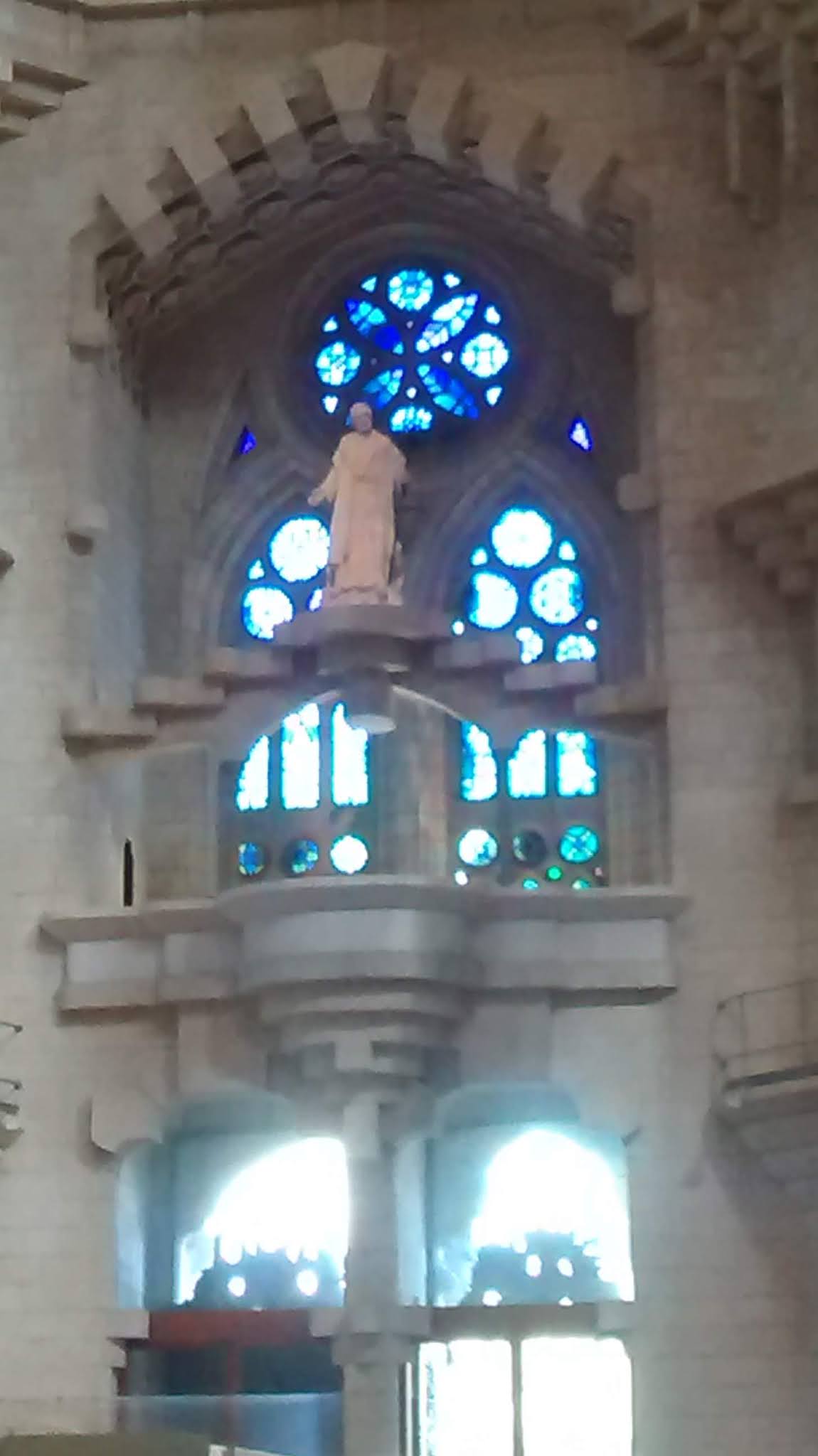



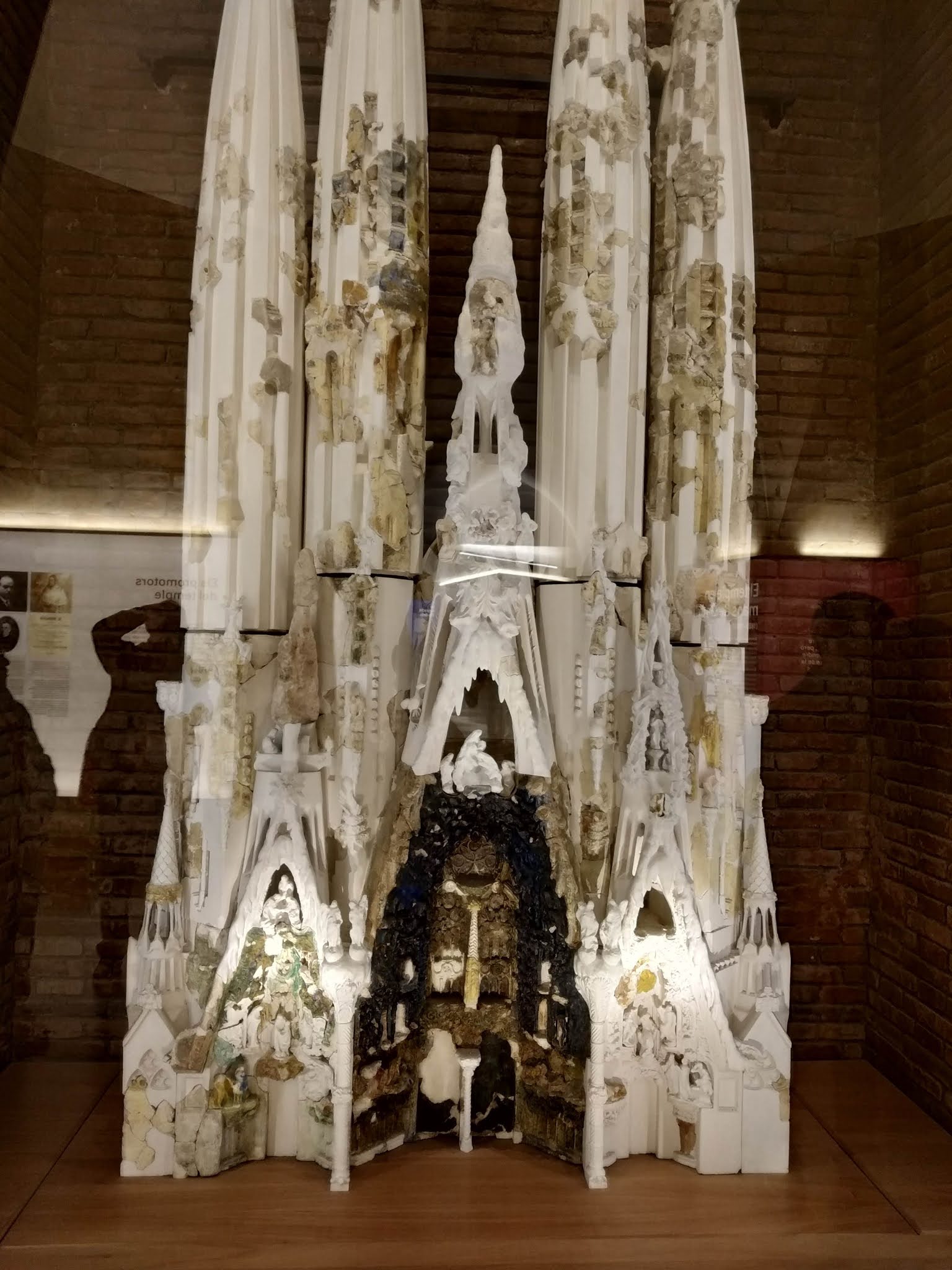


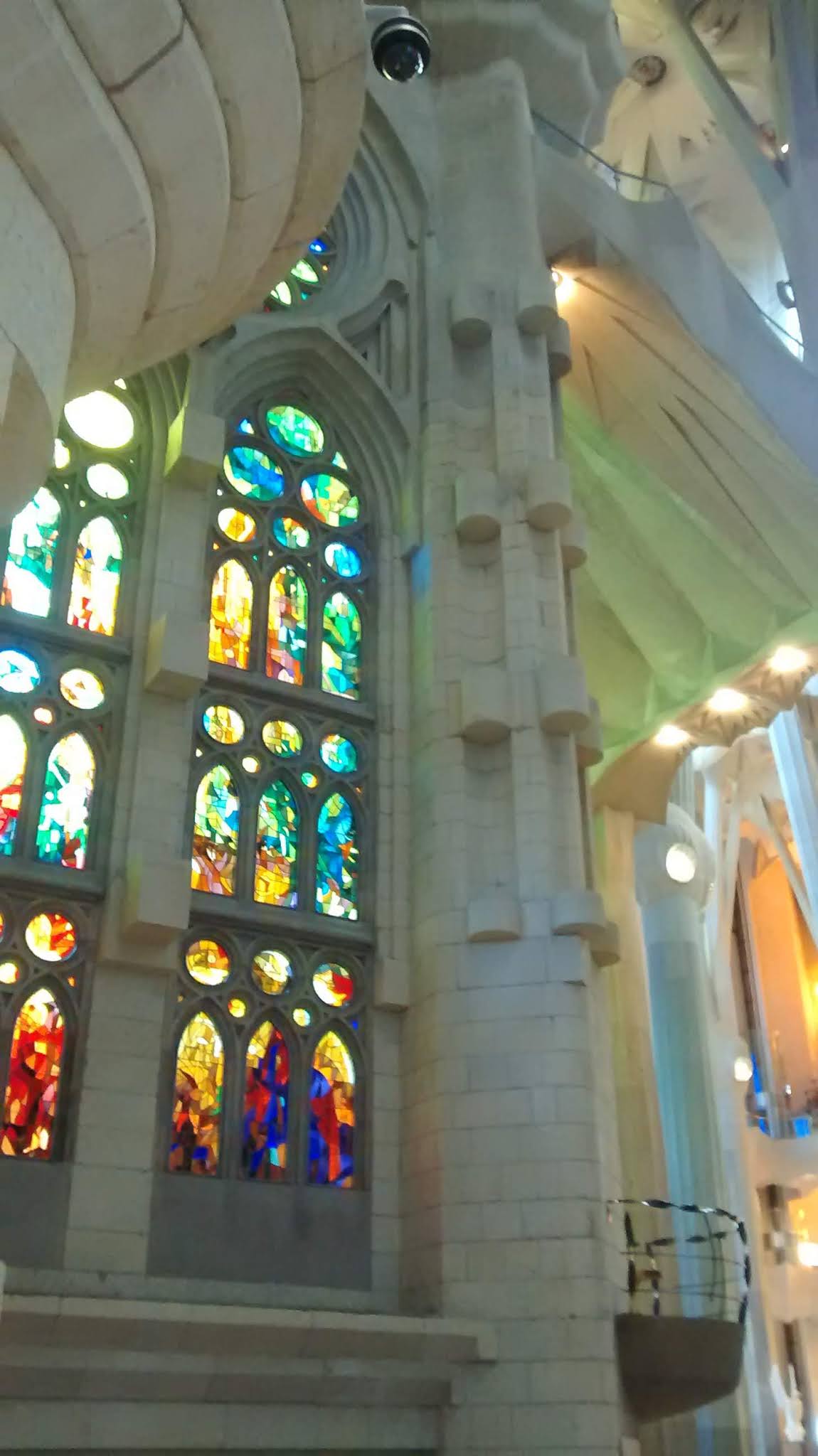
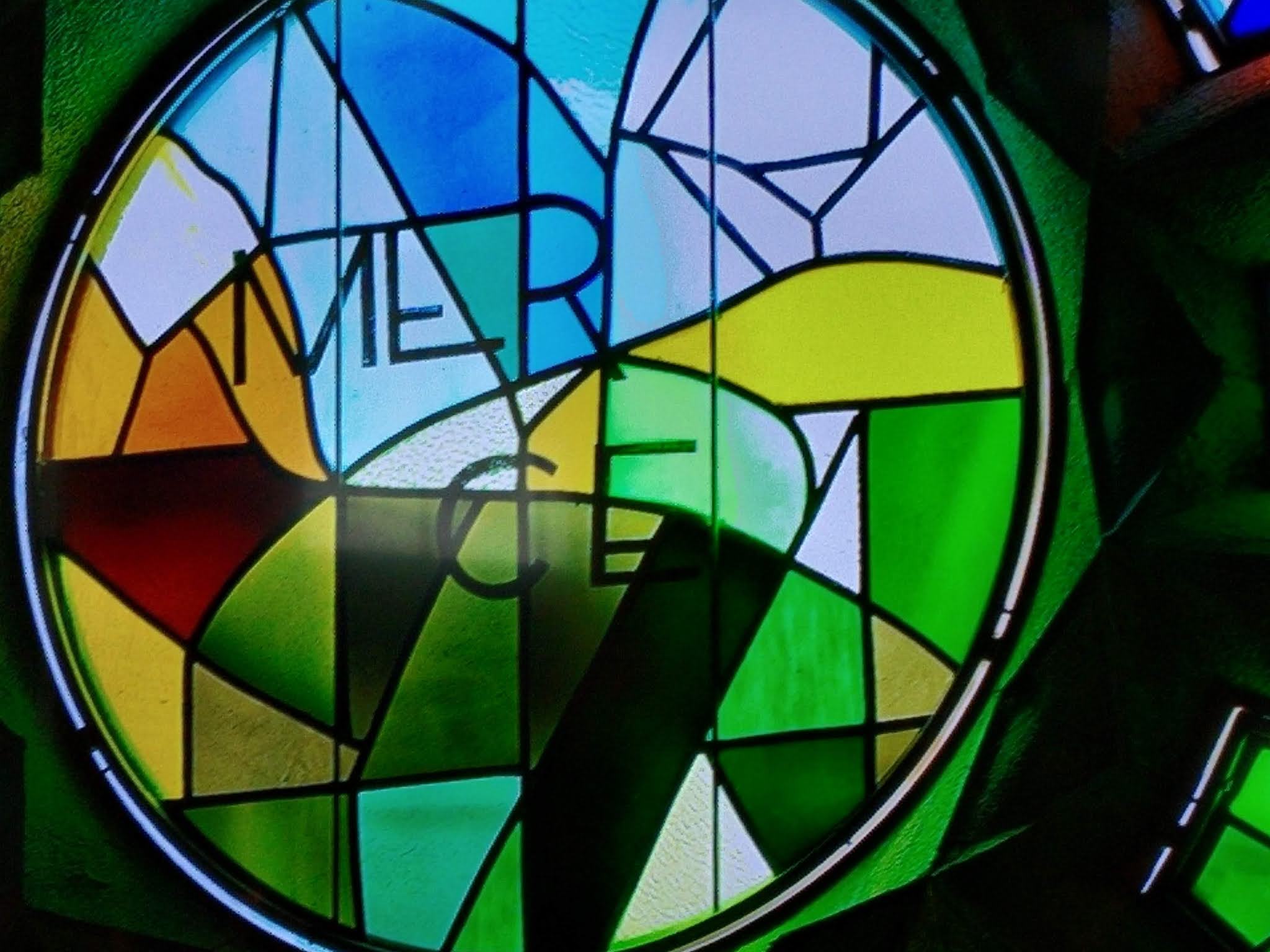


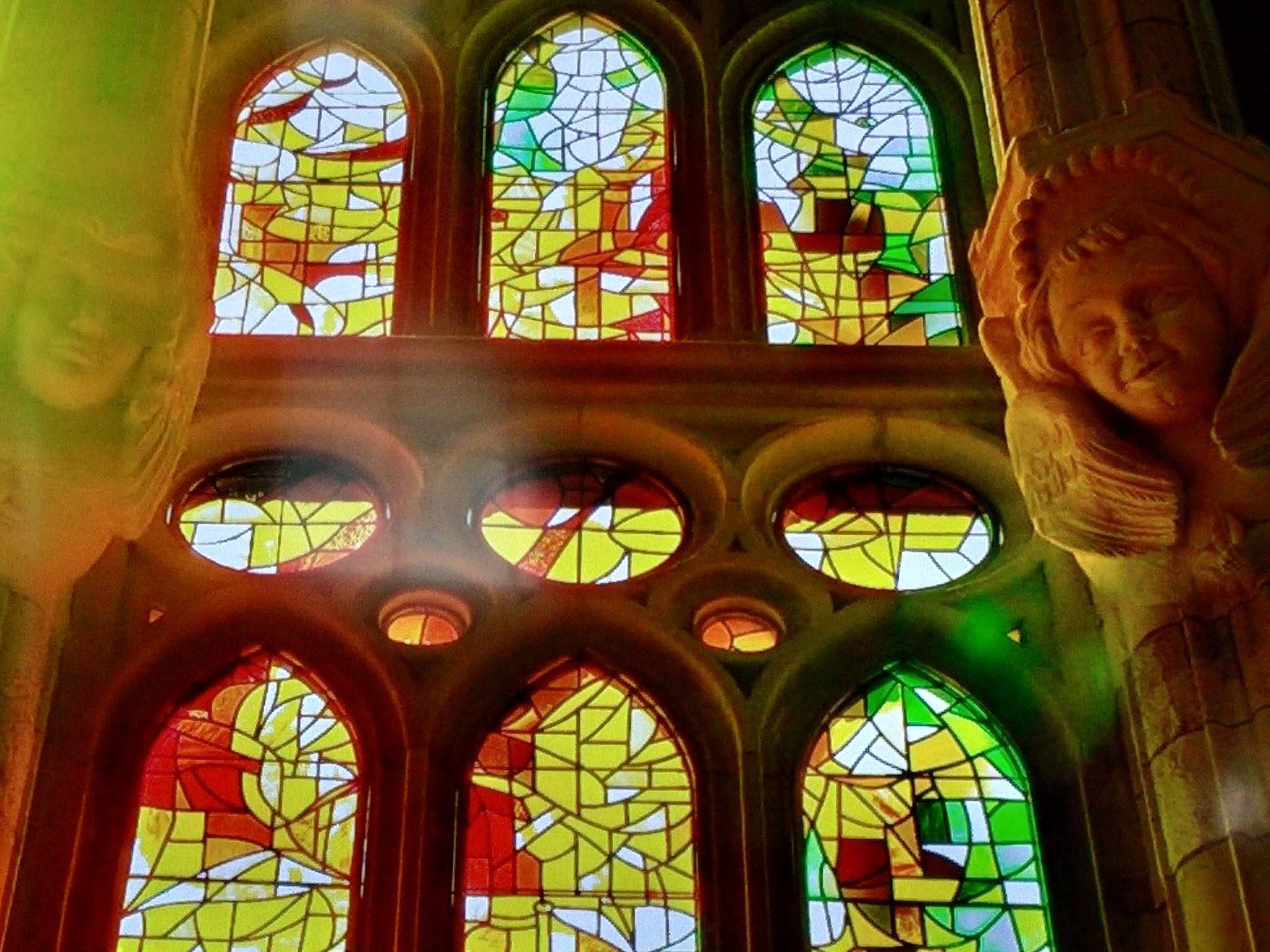





Comments
Shared this with a few of my Catalan friends who loved it.
I specifically liked the writer’s perspective of the optics and illuminations.
Kudos!!!!